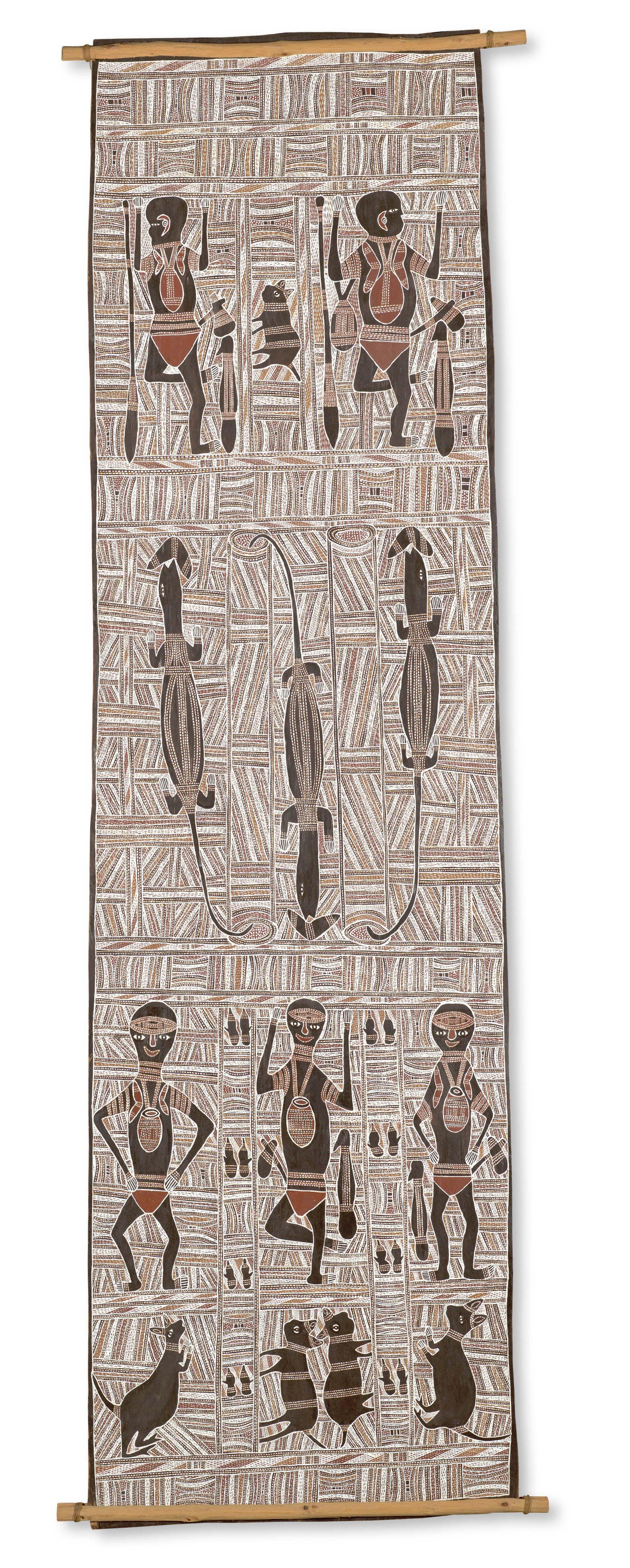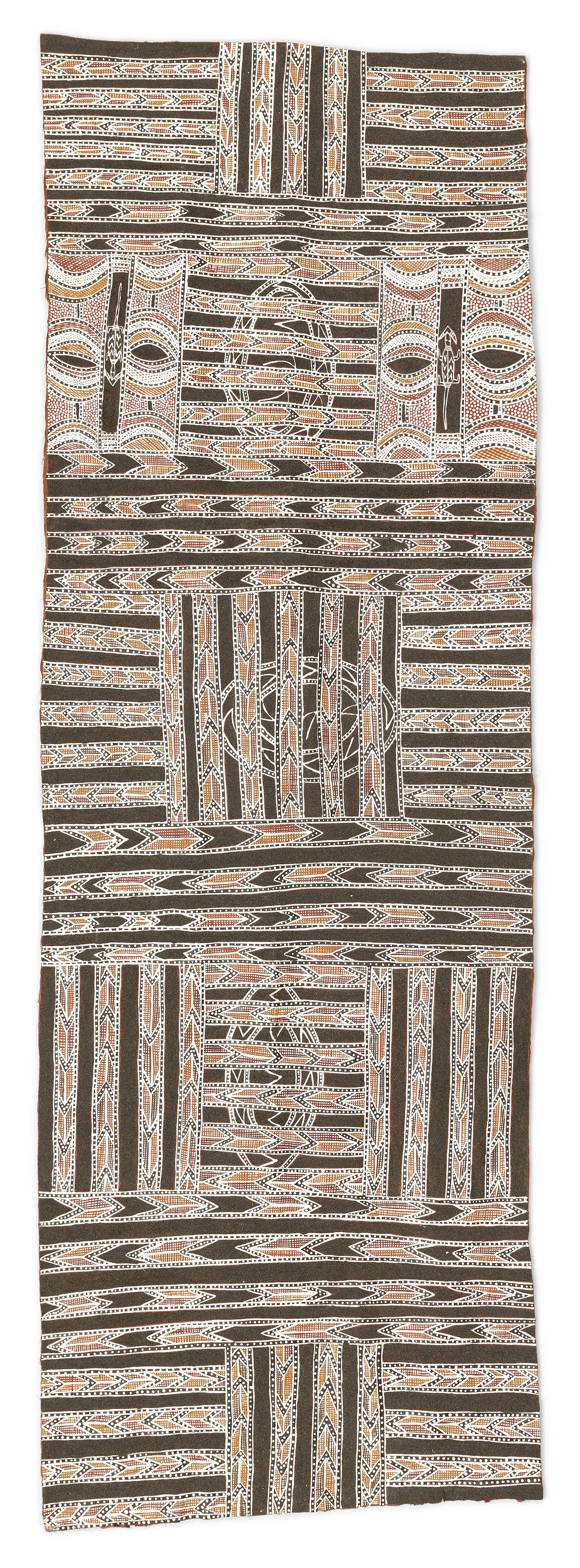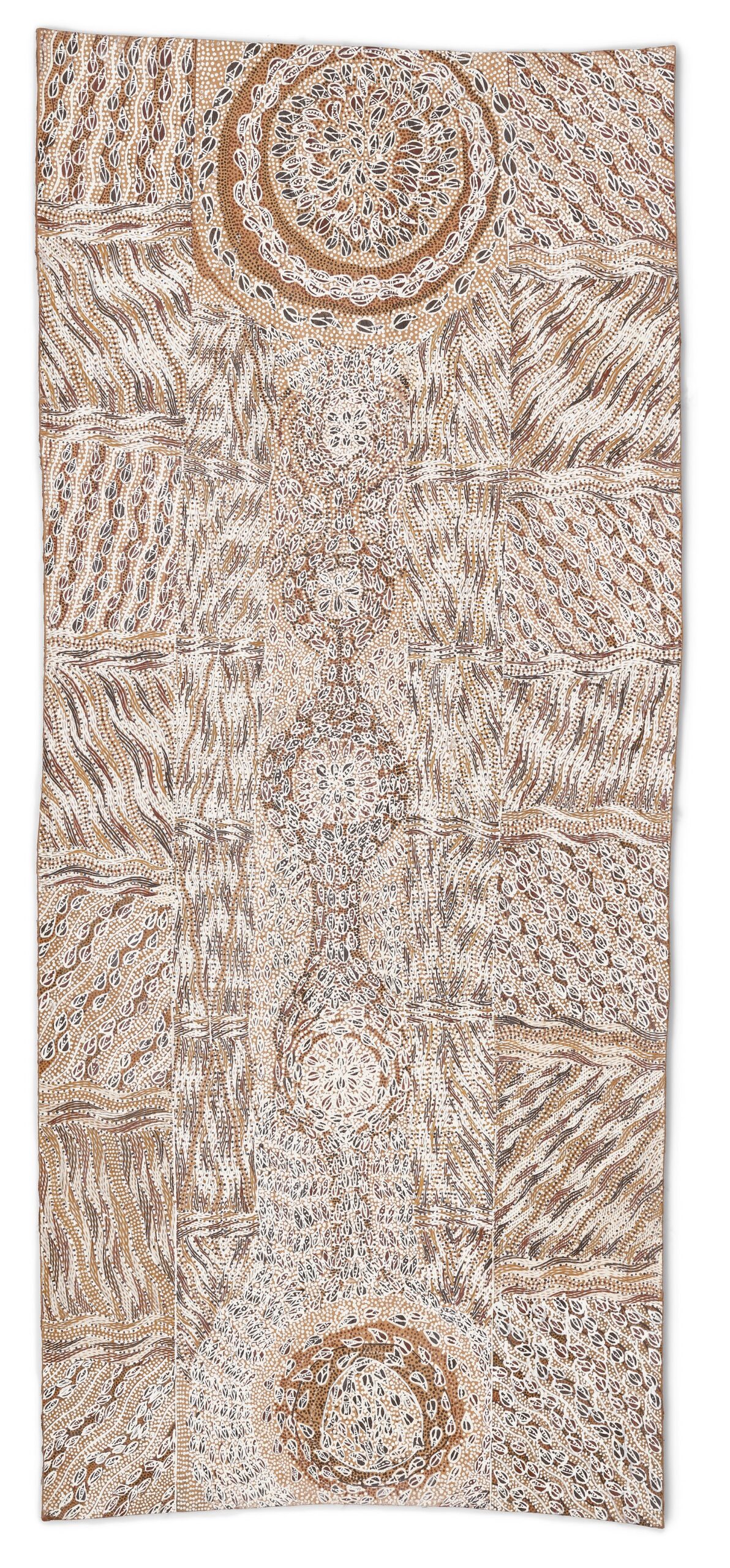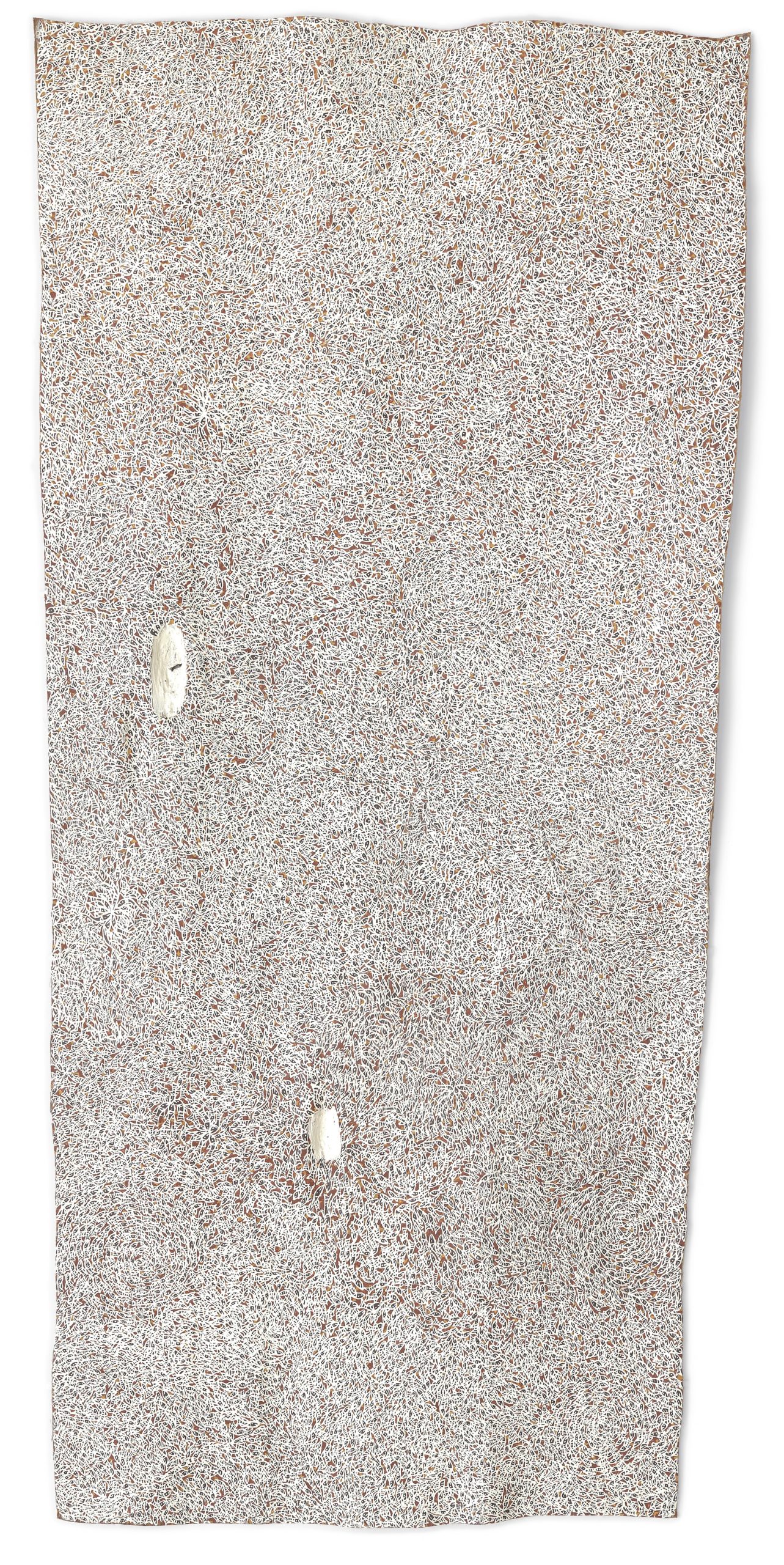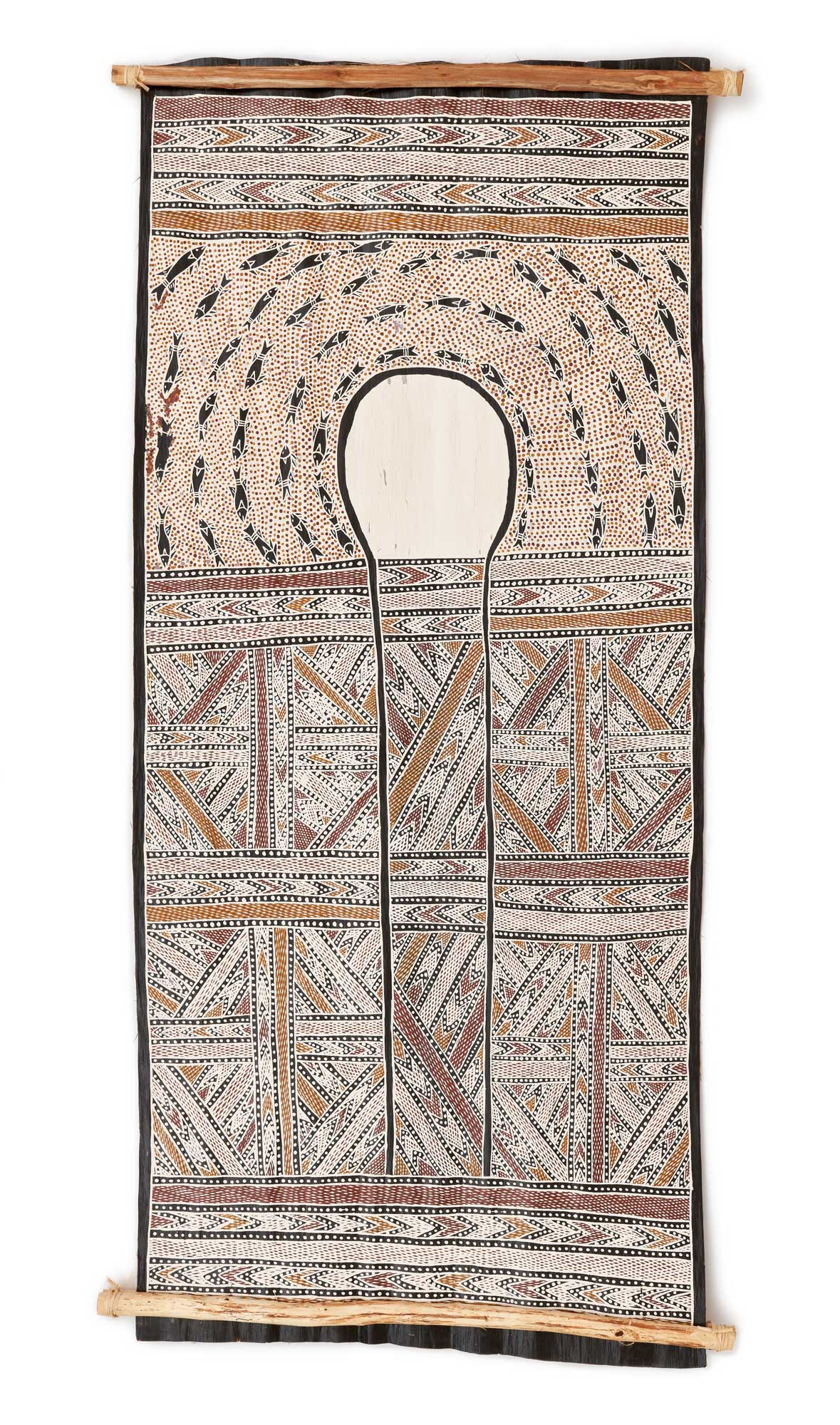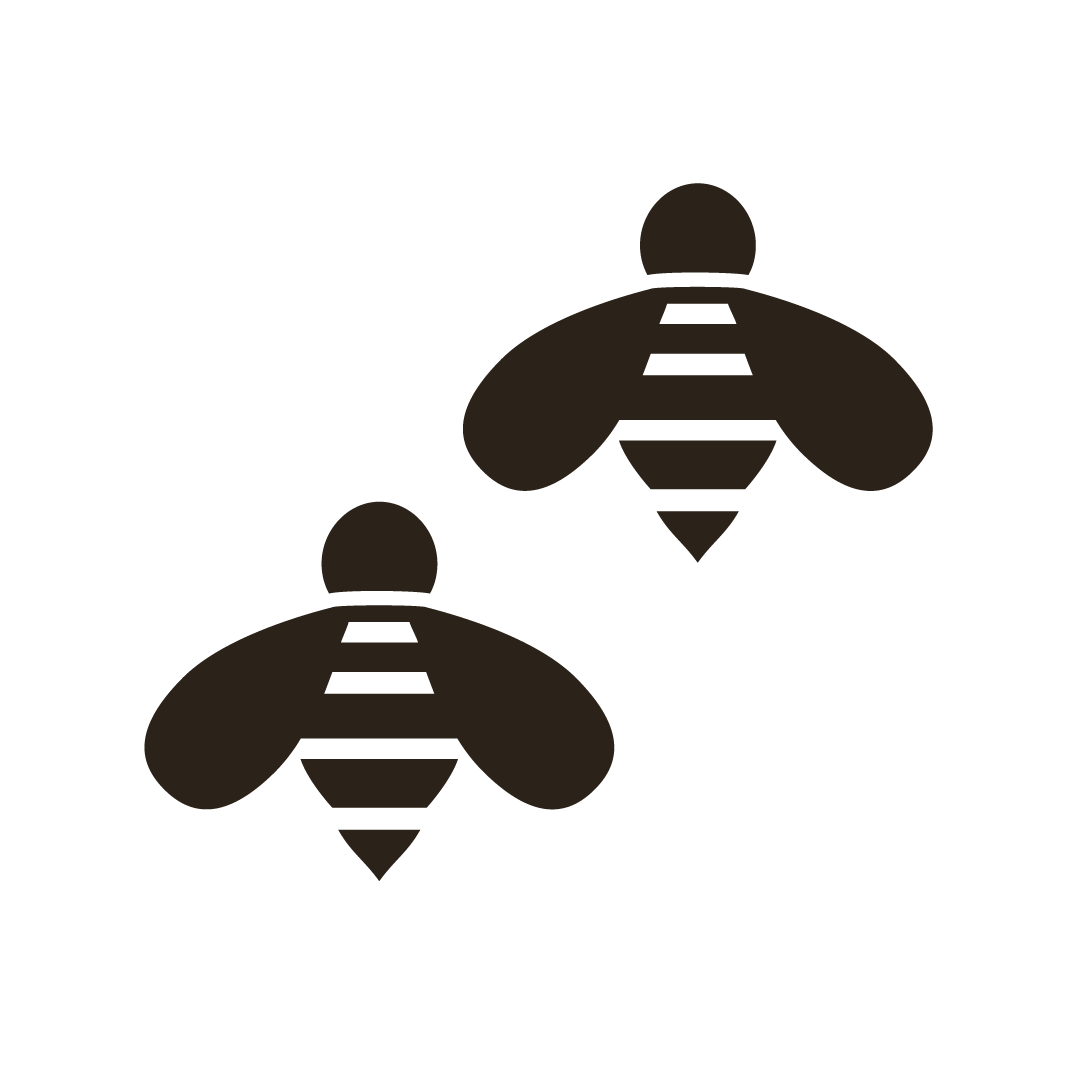
Wuyal | The Honey Ancestor
Wuyal, the ancestral Sugarbag Man, is an important ancestor of the Marrakulu clan of northeast Arnhem Land. Wuyal was the first man to look for any homeland for the Marrakulu people. He began a journey from Gurka’wuy traveling via Yuḏuyuḏu to Cape Shield, up to Trial Bay and along the course of the Goyder River until he came to Nhulun (Mount Saunders). Traveling along with Wuyal, was Ganyt’jalala. These men are symbolic of the märi-guthara (grandparent-grandchild) relationship which describes the relationship between Ḏäṯiwuy and Marrakulu clans. Wuyal carried with him tools for hunting animals and for collecting wild honey or sugarbag. The dilly bag, Banduk, worn around his neck, was used to carry the bush honey called guku. Wuyal used a stone axe, djalpaṯ, to cut down trees in his search for honey. He also carried a stone headed spear for hunting rock wallabies, djalaku. The stone head of the spear, Guyarra, is made from stone found at a place called Nilipitji. The shaft of the spear is called guṉḏit. Also carried was gaḻpu, a spearthrower. In their ancestral travels these men traveled alone without wives and conducted what was mens’ business in ceremony. Wuyal’s ceremonial ground where he danced and conducted sacred ceremony, a place near Buffalo Creek and Nhulun, is called Wandjipuy.
The tools were also used in shaping the land. Trees cut down by Wuyal in the search for sugarbag, turned into rivers. While looking for honey in Marrakulu Country, Wuyal cut the sacred Waṉambi tree. The falling path of the tree gouged the course of the Gurka’wuy River as it flows into the sea at Trial Bay. Inside the hollow log was the monitor lizard Djerrka, who was carried out to sea before being beached at Gurka’wuy by the incoming tide. The movement of the Waṉambi tree, as it follows the ebb and flow of the tides, connect the waters of several Dhuwa clans that are closely related through the actions of Wuyal. The Wawilak Sisters, in disguise as Yanawal the wild cat, witnessed the events of Wuyal, as did Djalaku, the Euro Ancestor (Osphranter robustus erubescens).
Wuyal also named places by throwing his boomerang, Gunyalili, and giving names to the places where it fell to the ground. From Nhulun he threw his Gunyalili and named a place called Gäluru in this way. Bees are the creators of the honey from these flowers. The continuum between the environment, the art and the sacred foundation of the Marrakulu is completed when the Marrakulu dance as bees in their ceremony elbows extended, hands clutching stringybark leaves which vibrate as wings.
“Yes, burial poles, bark and yiḏaki are all made from the gaḏayka tree (Eucalyptus tetrodonta, stringybark). It is a tree that belongs to the Marrakulu clan, and is also known as the Waṉambi tree or Binykurrŋu and Mawulul. The spirit man, Wuyal, was looking for a gaḏayka tree containing honey, and when he found one he chopped it down. It fell into the saltwater named Guṯaltja, and a wave took it as far as destiny allowed until it crashed onto the rock. And from there, the honey children were born. When we see the flowers blossoming, we sing dhaŋarra, and it reminds us of all the spirits of the people who have gone before us and will bloom again. Djuluwa, Gatjinydji, Dhaltaŋu: these are the sacred names called in the songlines.”
– WUKUṈ WAṈAMBI
Filter By
- Select a Filter
- Clans
- Songlines
Selection

